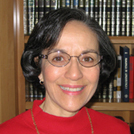
Carmen Silva-Corvalán
Spanish & Portugese and Linguistics
University of Southern California
csilva@usc.edu
website

|
Carmen Silva-Corvalán Spanish & Portugese and Linguistics University of Southern California csilva@usc.edu website |
| Participants: | 8 |
| Type of Study: | interview / naturalistic |
| Location: | USA |
| Media type: | audio |
| DOI: | doi:10.21415/T5WS36 |
Silva-Corvalán, Carmen: "Algunos aspectos de la gramática de los niños bilingües de Los Angeles (EEUU)"
Barrientos, Ramón: "Comprensión del vocabulario en preescolares hispano-hablantes de Los Angeles"
Martín, Juan: "La relación entre la estructura semántica y la sintáctica: Algunos casos planteados en la adquisición del español en Los Angeles"
Van der Vlugt, Martine: "Word order in the Spanish of a 5 year old bilingual"
The articles listed above can be found in the following volume:
These data are made available here courtesy of the USC Libraries:
In accordance with TalkBank rules, any use of data from this corpus must be accompanied by at least one of the above references.
For each of our eight subjects, we have obtained the following types of data: two tape-recorded sessions of approximately 30 minutes each between the child subject and a female research assistant, one consisting of naturalistic, spontaneous conversation, the other of role-play with puppets; in the third session the child produced a connected narrative based on a picturebook and answered a number of specific questions about the story. The four bilingual children were interviewed once in Spanish and once in English. During the second round of interviews (May-June 1989), we obtained approximately 30 minutes of naturalistic, spontaneous conversation from each child in the first session. In the second session the child produced a connected narrative based on a picturebook, comparable to the one used in the first round of interviews, and answered a number of specific questions about the story. Altogether, we recorded approximately 18 hours of spoken data during the first part of the research period, and 12 hours towards the end. Table 1 summarizes some relevant information about the children included in the study.
| NAME | AGE at Recordings | CHILD LANG. | HOME LANG. | SCHOOL LANG. | |||
| 1ST | 2ND | 3RD | 4TH | ||||
| Cindy | 5;5 | 5;10 | 6;5 | 7;0 | Spanish | Spanish | English |
| Daniela | 5;1 | 5;6 | 6;1 | 6;6 | Spanish | Spanish | English/Span. |
| Jessica | 5;3 | 5;8 | 6;3 | 6;8 | English | Eng./Span. | English |
| Chris | 5;4 | 5;9 | 6;4 | 6;8 | English | English | English/Span. |
| Michael | 5;5 | 5;10 | 6;6 | 7;1 | Eng./Span. | Eng./Span. | English |
| Bryan | 5;6 | 5;11 | 6;6 | 7;1 | Eng./Span | Eng./Span. | English/Span. |
| Melina | 5;11 | 6;4 | 6;10 | 7;3 | Eng./Span | Eng./Span. | English/Span. |
| Johanna | 5;7 | 6;0 | 6;7 | 7;2 | Eng./Span | Spanish | English/Span. |
The monolingual and bilingual Spanish tapes from the first round of recordings have been computerized and most of them also edited. Data from the English-speaking children as well as the English tapes from the bilinguals have also been transcribed and computerized, but not yet edited. Funds were insufficient for the transcription of the second set of recordings. (See samples of computerized data, enclosed).
All aspects of the research in Los Angeles were planned by the three Principal Investigators from the University of Southern California (Drs. Clancy, Saltarelli, and Silva-Corvalán). The supervision and coordination of the research assistants' work was the responsibility of Prof. Silva-Corvalán.